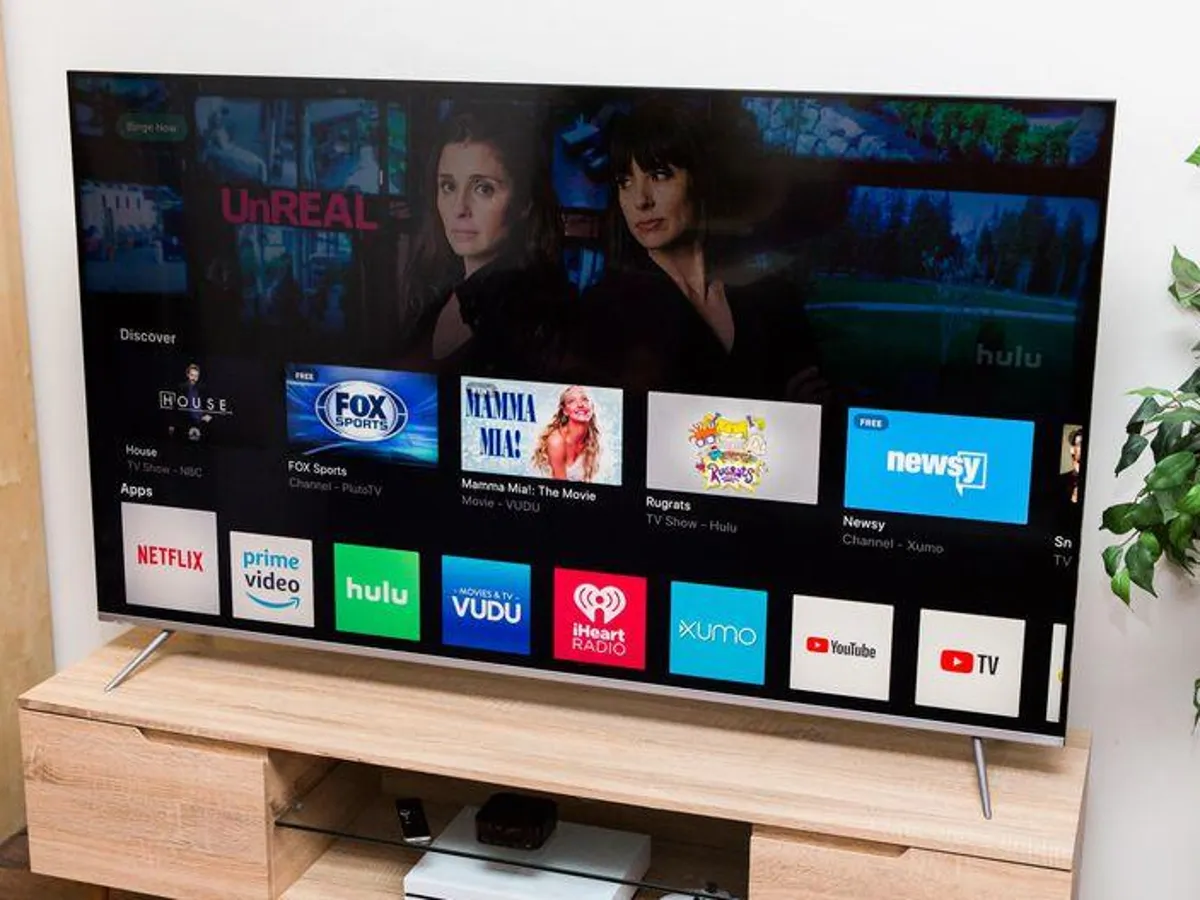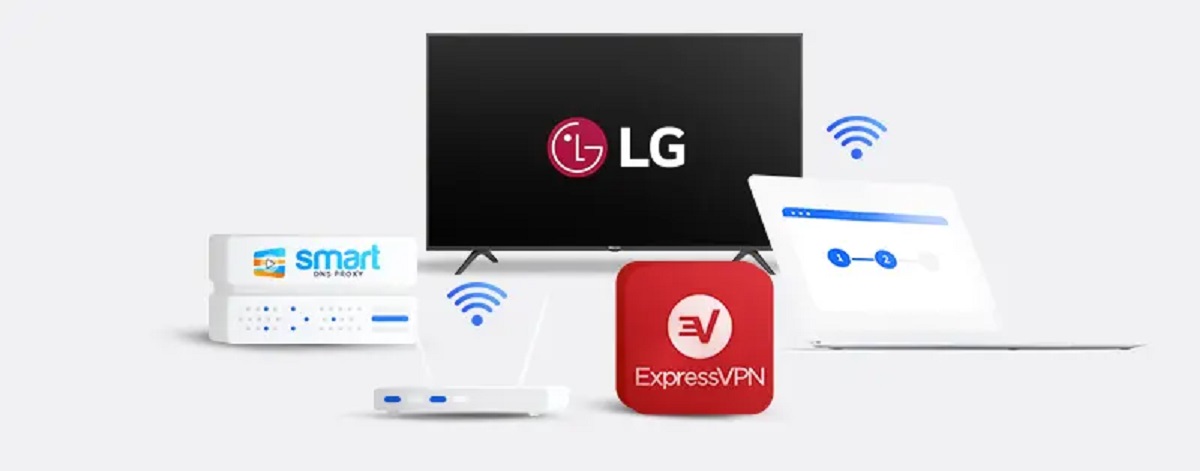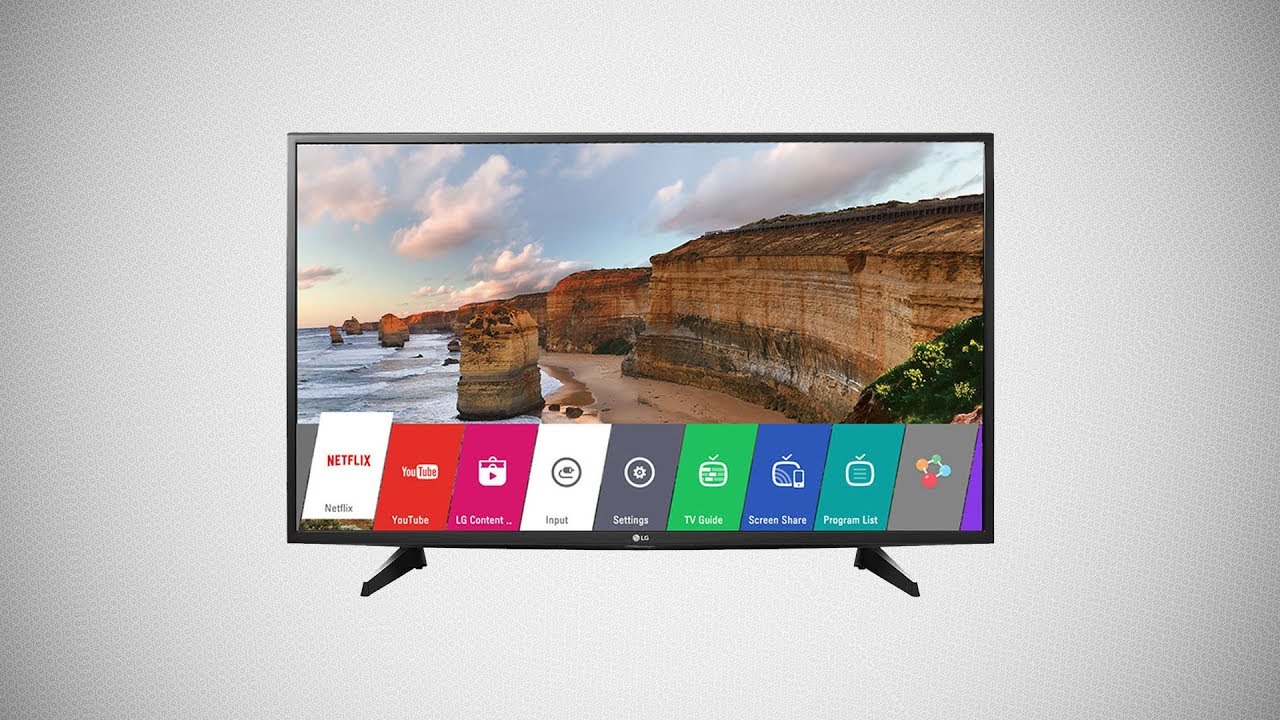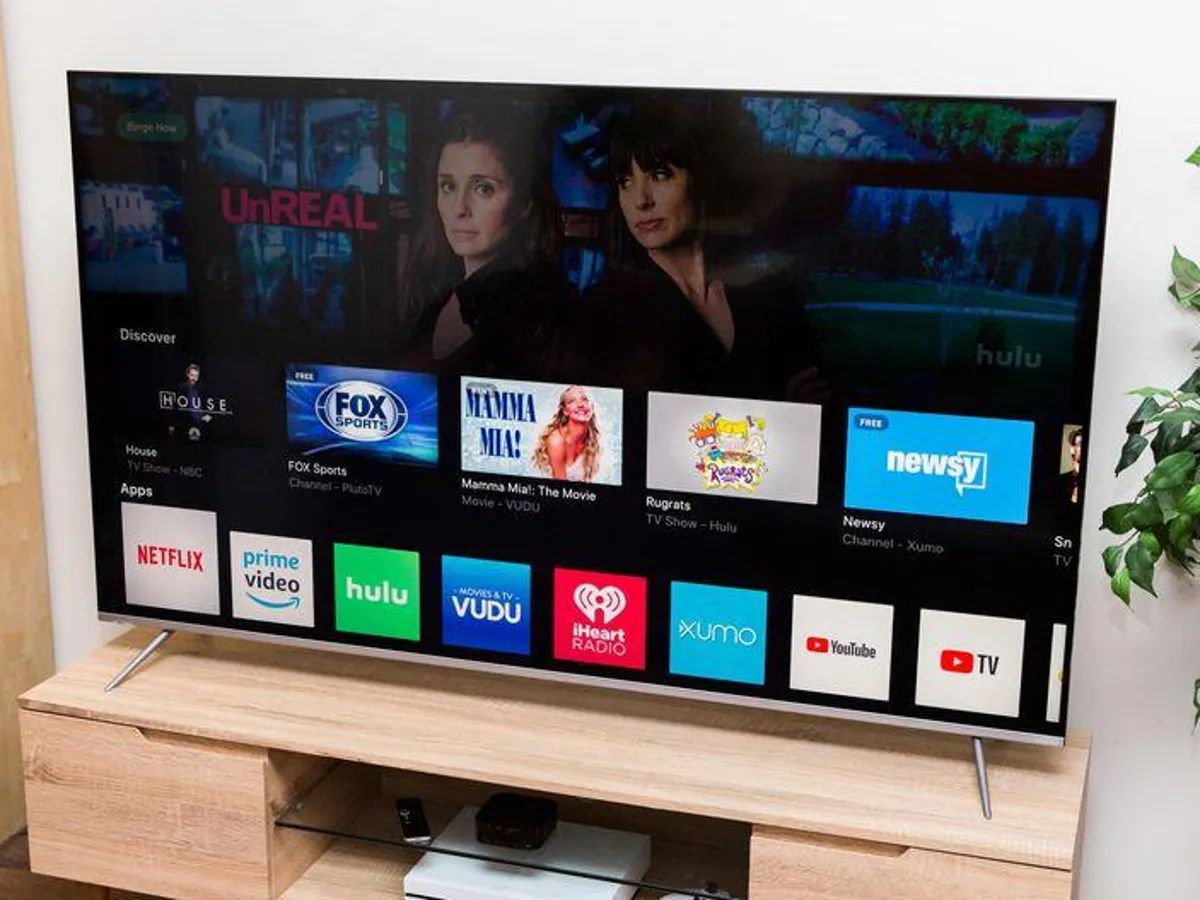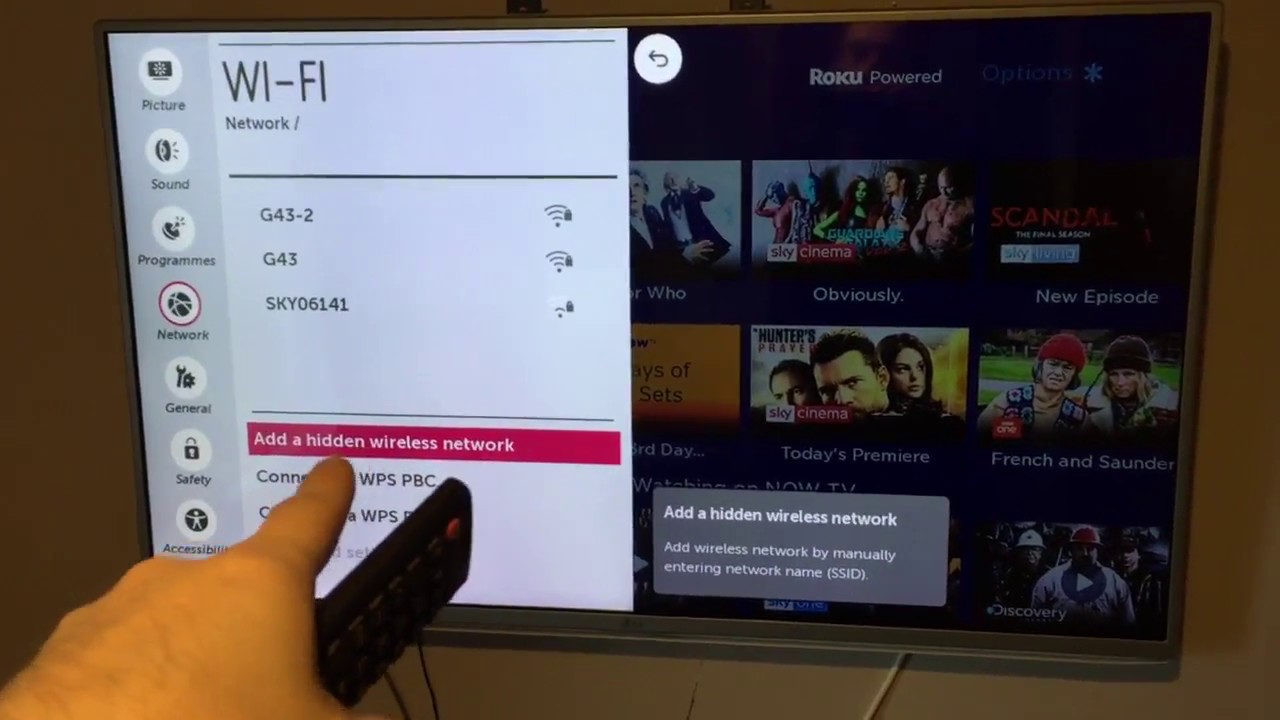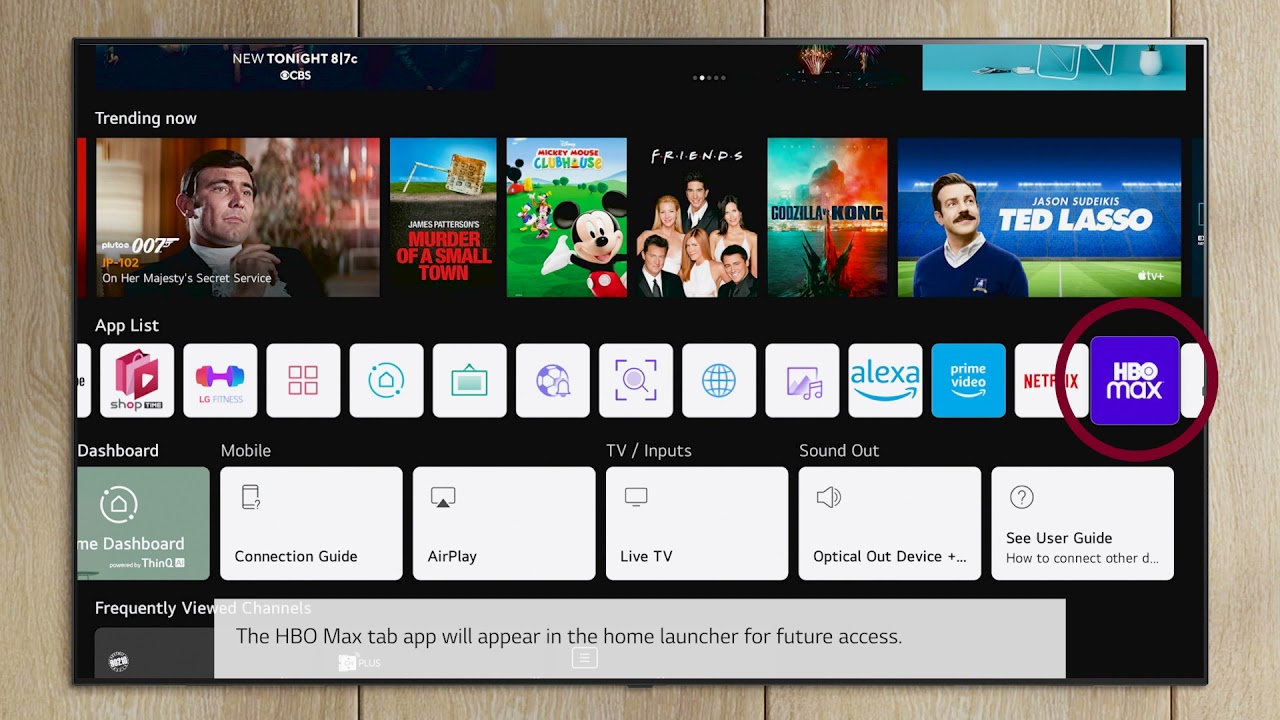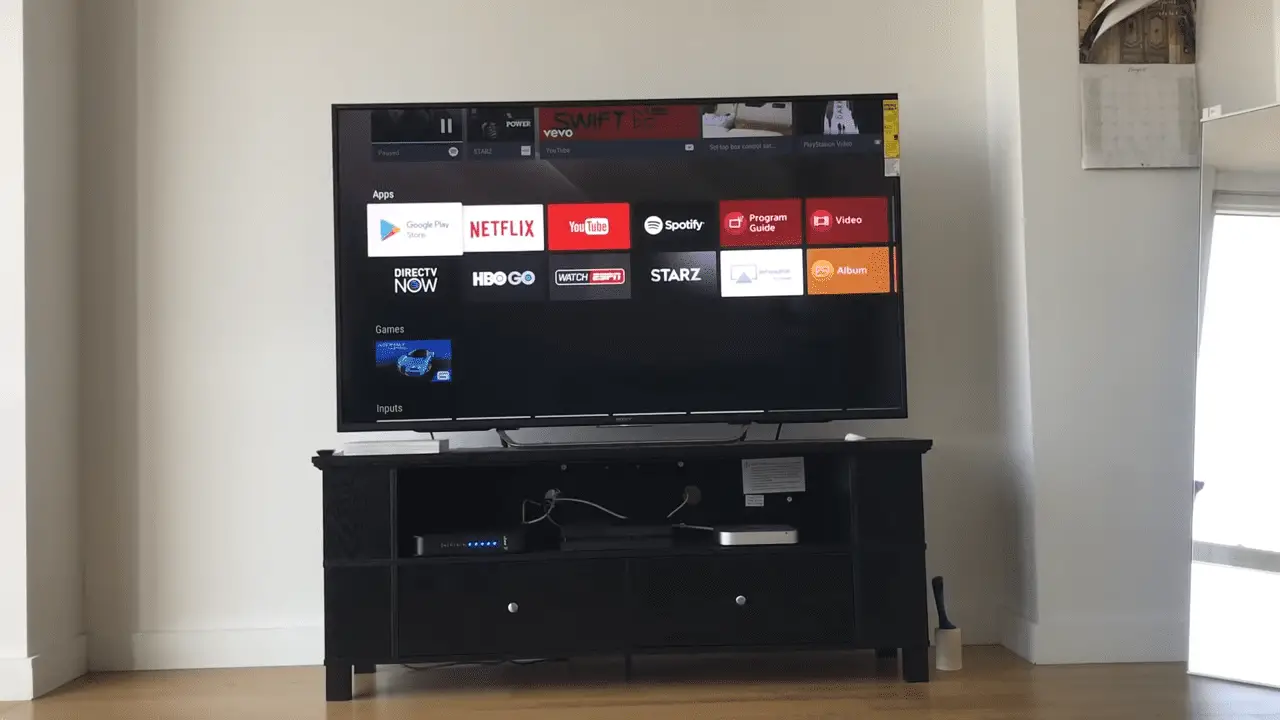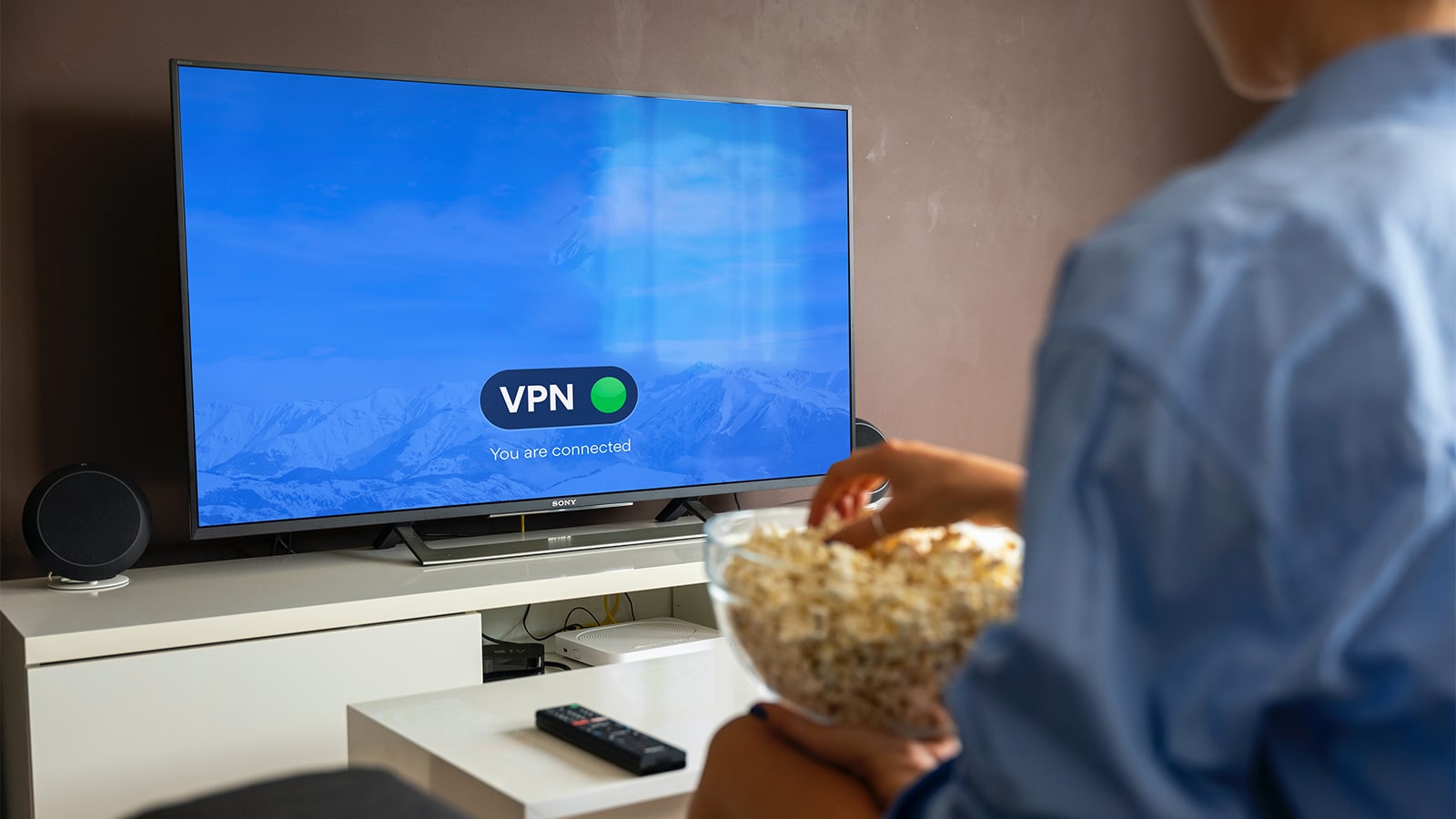Introduction
Welcome to the world of LG Smart TV, where you can access a wide range of entertainment right from the comfort of your living room. With its internet connectivity, you can stream your favorite movies and TV shows, browse the web, and even connect with friends and family on social media platforms. However, connecting your LG Smart TV to the internet comes with its own set of potential risks – from privacy concerns to geo-restrictions on streaming content.
This is where a Virtual Private Network, or VPN, can come to your rescue. By using a VPN on your LG Smart TV, you can ensure a secure and private internet connection, keep your online activities hidden away from prying eyes, and bypass any geographical restrictions that may prevent you from accessing certain content.
In this guide, we will take you through the steps to set up and use a VPN on your LG Smart TV. Whether you want to enhance your online security, access geo-restricted content, or simply enjoy an uninterrupted streaming experience, a VPN can be an invaluable tool for your LG Smart TV.
Why should you use a VPN on your LG Smart TV?
While LG Smart TVs offer a plethora of entertainment options, using a VPN can greatly enhance your viewing experience. Here are some compelling reasons why you should consider using a VPN on your LG Smart TV:
- Secure your online activities: A VPN encrypts your internet connection, ensuring that your data is protected from potential hackers and cybercriminals. This is particularly important when accessing public Wi-Fi networks, where your personal information is vulnerable.
- Bypass geographical restrictions: Many streaming services and websites have region-specific content due to licensing agreements. By using a VPN, you can change your virtual location and access content that may not be available in your country.
- Protect your privacy: Internet service providers (ISPs) and other third parties may track and monitor your online activities. With a VPN, your IP address is masked, making it difficult for anyone to track your browsing history or target you with personalized ads.
- Enjoy unrestricted streaming: Some ISPs may throttle the internet speed for certain streaming services, leading to buffering and slow streaming. By using a VPN, you can bypass these restrictions and enjoy smooth, uninterrupted streaming.
- Access content from different countries: A VPN allows you to virtually connect to servers in different countries, giving you the ability to access region-specific content from around the world. Want to watch a show that’s only available in the US? Simply connect to a US server and start streaming!
- Protect your gaming experience: If you’re an avid gamer, using a VPN can help protect against DDoS attacks, reduce lag, and connect to gaming servers in other regions for a better multiplayer experience.
With these benefits in mind, it’s clear that using a VPN on your LG Smart TV can greatly enhance your online experience, offering privacy, security, and access to a world of entertainment. So, let’s dive into the steps to set up a VPN on your LG Smart TV and unlock its full potential!
Getting started with a VPN on LG Smart TV
Before you can start enjoying the benefits of a VPN on your LG Smart TV, there are a few preliminary steps you need to take. Let’s walk through the process:
Step 1: Choose a reliable VPN service provider
The first step is to select a reputable VPN service provider that offers support for LG Smart TV. There are many providers available, so make sure to consider factors such as server locations, connection speeds, and customer reviews to find the best option for your needs.
Step 2: Connect your LG Smart TV to the internet
Ensure that your LG Smart TV is connected to the internet either through a wired or wireless connection. This can typically be done through the TV’s network settings menu. Make sure you have a stable and reliable internet connection to ensure smooth streaming and browsing.
Step 3: Set up the VPN on your router
To enable VPN functionality on your LG Smart TV, you’ll need to set up the VPN on your router. This allows all devices connected to your home network, including your LG Smart TV, to benefit from the VPN’s encrypted connection. Refer to your VPN provider’s instructions on how to set up the VPN on your specific router model.
Step 4: Connect your LG Smart TV to the VPN
Once you have successfully set up the VPN on your router, it’s time to connect your LG Smart TV to the VPN. This can typically be done through the network settings menu on your LG Smart TV. Look for the option to connect to a VPN, and enter the necessary details provided by your VPN service provider.
Now that you have completed the initial steps, your LG Smart TV should be connected to the VPN, providing you with a secure and private internet connection. In the following sections, we will explore different methods to configure the VPN on your LG Smart TV, depending on your specific setup and preferences.
Step 1: Choose a reliable VPN service provider
Choosing the right VPN service provider is crucial for ensuring a secure, fast, and reliable connection on your LG Smart TV. Here are some factors to consider when selecting a VPN provider:
- Server locations: Look for a VPN provider that offers a wide range of server locations. Having servers in different countries allows you to bypass geo-restrictions and access content from around the world.
- Connection speed: Streaming content on your LG Smart TV requires a fast and stable internet connection. Make sure to choose a VPN provider that offers high-speed connections and optimized servers for streaming.
- Supported protocols: VPN protocols determine the level of security and encryption used. Look for a VPN provider that supports industry-standard protocols like OpenVPN, IKEv2, or L2TP/IPSec.
- Device compatibility: Ensure that the VPN service provider supports LG Smart TV and offers dedicated apps or router configuration options. Compatibility with other devices you may want to connect to the VPN, such as smartphones or gaming consoles, is also important.
- User-friendly interface: A VPN provider with an intuitive and user-friendly interface can make the setup and configuration process much easier. Look for a provider that offers a simple and straightforward user experience.
- Customer support: In case you encounter any issues or have questions during the setup process, it’s essential to have reliable customer support. Look for VPN providers that offer 24/7 customer support through live chat or email.
- Price and plans: Compare the pricing and subscription plans of different VPN providers to find one that fits your budget and offers the features you require. Many providers offer flexible options, including monthly, yearly, or even lifetime subscriptions.
Take your time to research and read reviews of different VPN service providers. Pay attention to user feedback and independent reviews to get a genuine understanding of their performance and reliability. It’s also a good idea to take advantage of any free trials or money-back guarantees to test the VPN’s compatibility and performance with your LG Smart TV.
By choosing a reliable VPN service provider, you can ensure a secure and seamless experience when connecting your LG Smart TV to the internet. Let’s move on to the next step and learn how to connect your LG Smart TV to the internet before configuring the VPN.
Step 2: Connect your LG Smart TV to the internet
In order to set up and use a VPN on your LG Smart TV, you’ll need to ensure that your TV is properly connected to the internet. Here’s how you can do it:
Wired connection:
- Locate the Ethernet port on the back of your LG Smart TV.
- Connect one end of an Ethernet cable to the Ethernet port of your TV.
- Connect the other end of the Ethernet cable to your router or modem.
- Ensure that both the TV and the router/modem are powered on.
- On your LG Smart TV, go to the Settings menu.
- Navigate to the Network section and select “Wired Connection”.
- Follow the on-screen instructions to complete the wired network setup.
- Your LG Smart TV is now connected to the internet through a wired connection.
Wireless connection:
- On your LG Smart TV, go to the Settings menu.
- Navigate to the Network section and select “Wi-Fi Connection”.
- Choose your Wi-Fi network from the available list of networks.
- Enter the password for your Wi-Fi network, if prompted.
- Follow the on-screen instructions to complete the wireless network setup.
- Your LG Smart TV is now connected to the internet through a wireless connection.
Once your LG Smart TV is connected to the internet, you can proceed to the next step of setting up the VPN. Keep in mind that a stable and reliable internet connection is essential for optimal streaming and browsing experience on your LG Smart TV.
Now that you’ve successfully connected your LG Smart TV to the internet, let’s move on to the next step, which involves setting up the VPN on your router for an enhanced and secure connection.
Step 3: Set up the VPN on your router
In order to enable VPN functionality on your LG Smart TV, you’ll need to set up the VPN on your router. This allows all devices connected to your home network, including your LG Smart TV, to benefit from the VPN’s encrypted connection. Here’s how you can do it:
- Access your router’s administration panel by entering the router’s IP address in a web browser. The IP address is typically found on the back of your router or in its user manual.
- Enter your router’s username and password to log in. If you haven’t changed these credentials, they are usually set to the default values provided by the manufacturer.
- Navigate to the router’s VPN settings. The location of these settings may vary depending on the make and model of your router.
- Select your preferred VPN protocol (e.g., OpenVPN, PPTP, etc.) and enter the necessary details provided by your VPN service provider, such as the server address and login credentials.
- Save the VPN settings and apply the changes.
- Restart your router to ensure the VPN settings take effect.
It’s important to note that not all routers support VPN configurations. Before proceeding with the setup, make sure that your router is compatible with VPN technology. If your current router doesn’t support VPN, you may need to consider purchasing a new router that offers VPN capabilities or flashing alternative firmware like DD-WRT or Tomato onto your existing router, which can enable VPN functionality.
Setting up the VPN on your router allows all devices connected to your home network, including your LG Smart TV, to automatically use the VPN connection. This eliminates the need to individually configure the VPN settings on your TV, providing a seamless and secure experience across all connected devices.
Now that you have successfully set up the VPN on your router, you’re one step closer to enjoying a secure and private internet connection on your LG Smart TV. Let’s move on to the next step and learn how to connect your LG Smart TV to the VPN and configure the necessary settings.
Step 4: Connect your LG Smart TV to the VPN
With the VPN set up on your router, it’s time to connect your LG Smart TV to the VPN and configure the necessary settings. Follow these steps to establish a secure VPN connection:
- On your LG Smart TV, go to the Settings menu.
- Navigate to the Network section and select “Network Connection”.
- Choose “Set Expert” or “Advanced Settings” depending on your TV model.
- Select “VPN Connection” from the available options.
- Enter the VPN details provided by your VPN service provider, including the server address and login credentials.
- Choose the VPN protocol that you previously configured on your router (e.g., OpenVPN, PPTP, etc.).
- Save the VPN settings and exit the menu.
- Restart your LG Smart TV to apply the VPN settings.
After the restart, your LG Smart TV should establish a connection to the VPN server through the router. Any internet traffic from your LG Smart TV will now be encrypted and routed through the VPN tunnel, ensuring a secure and private browsing experience.
If you encounter any issues during this setup process, check your VPN provider’s documentation or reach out to their customer support for assistance. They can provide you with specific instructions tailored to your router and LG Smart TV model.
Congratulations! You have successfully connected your LG Smart TV to the VPN, enhancing your online security and unlocking access to geo-restricted content. However, please note that the specific steps and options may vary depending on your LG Smart TV model and the VPN service provider you are using.
Now that your LG Smart TV is securely connected to the VPN, you can enjoy a wide range of content from around the world, bypass geo-restrictions, and enhance your privacy while streaming your favorite movies, TV shows, and more.
In the next section, we will explore different methods to configure the VPN on your LG Smart TV, depending on your specific setup and preferences.
How to configure VPN on LG Smart TV
Configuring a VPN on your LG Smart TV might vary depending on the model and the VPN service provider you have chosen. Here are two common methods to configure a VPN on your LG Smart TV:
Option 1: Set up VPN on router
If you have already set up the VPN on your router, your LG Smart TV will automatically be connected to the VPN. This method ensures that all devices connected to your home network, including your LG Smart TV, benefit from the VPN’s encrypted connection. Simply follow the previous steps to set up the VPN on your router and your LG Smart TV will be protected by the VPN without requiring any additional configuration.
Option 2: Set up VPN through DNS configuration
If your router doesn’t support VPN configurations or you prefer not to set up the VPN on the router, you can configure the VPN on your LG Smart TV using DNS settings. Here’s how:
- Contact your VPN service provider and obtain the DNS server addresses.
- On your LG Smart TV, go to the Settings menu.
- Navigate to the Network section and select “Network Connection”.
- Choose “Set Expert” or “Advanced Settings”.
- Select “DNS Configuration” from the available options.
- Enter the primary and secondary DNS server addresses provided by your VPN service provider.
- Save the DNS settings and exit the menu.
- Restart your LG Smart TV to apply the changes.
By configuring the DNS settings, your LG Smart TV will route its internet traffic through the VPN servers, allowing you to enjoy a secure and private browsing experience without the need for a VPN-enabled router.
It’s important to note that the specific steps and options may vary depending on your LG Smart TV model and the VPN service provider you are using. If you encounter any issues during the configuration process, it’s recommended to refer to your VPN provider’s documentation or contact their customer support for assistance.
Now that you have successfully configured the VPN on your LG Smart TV, you can enjoy a secure and private internet connection, access geo-restricted content, and enhance your overall streaming experience with peace of mind.
In the next section, we will provide some troubleshooting tips to help you resolve any potential VPN connection issues on your LG Smart TV.
Option 1: Set up VPN on router
Setting up a VPN on your router is one of the most convenient ways to ensure that all devices connected to your home network, including your LG Smart TV, automatically benefit from the VPN’s encrypted connection. Here’s a step-by-step guide to setting up a VPN on your router:
- Access your router’s administrative panel by entering the router’s IP address into a web browser.
- Log in to the router’s administration interface using your username and password. If you haven’t changed these credentials, refer to the router’s documentation or look for the default login details.
- Locate the VPN settings section, which is typically found in the router’s “Advanced”, “Security”, or “VPN” menu.
- Select the VPN protocol you want to use, such as OpenVPN, PPTP, or L2TP/IPSec.
- Enter the necessary details provided by your VPN service provider. This usually includes the server address, username, password, and any additional settings specific to your VPN provider.
- Save the VPN settings and apply the changes. Your router may need to restart for the changes to take effect.
- Once the router has restarted, all devices connected to your home network, including your LG Smart TV, should be automatically routed through the VPN, ensuring a secure and private internet connection.
Keep in mind that the specific steps and options for setting up a VPN on your router may differ depending on the router model and firmware version. If you encounter any difficulties or if your router doesn’t have built-in VPN support, it’s worth exploring alternative firmware options like DD-WRT or Tomato, which can provide enhanced VPN functionality to compatible routers.
By setting up the VPN directly on your router, you simplify the process of connecting your LG Smart TV to a VPN and ensure that all devices connected to your home network are protected. This method allows you to bypass the need for individual VPN configurations on each device, providing a seamless and secure browsing experience.
Now that you know how to set up a VPN on your router, you can enjoy the benefits of enhanced security and privacy on your LG Smart TV, opening up a world of streaming possibilities without restrictions.
In the next section, we will address some common troubleshooting tips to help you overcome potential issues with your VPN connection on your LG Smart TV.
Option 2: Set up VPN through DNS configuration
If your router doesn’t support VPN configurations or you prefer not to set up the VPN on the router, an alternative method to configure the VPN on your LG Smart TV is through DNS settings. Here’s how you can do it:
- Obtain the DNS server addresses from your VPN service provider. These addresses are usually provided in the VPN setup instructions or your account dashboard.
- On your LG Smart TV, go to the Settings menu.
- Navigate to the Network section and select “Network Connection”.
- Choose “Set Expert” or “Advanced Settings”, depending on your LG Smart TV model.
- Select “DNS Configuration” from the available options.
- Enter the primary and secondary DNS server addresses provided by your VPN service provider.
- Save the DNS settings and exit the menu.
- Restart your LG Smart TV to apply the changes.
By configuring the DNS settings on your LG Smart TV, it will route its internet traffic through the VPN server. Although this method does not encrypt your connection like a traditional VPN, it allows you to bypass geo-restrictions and access content that may be blocked in your location.
It’s important to note that using DNS configuration does not provide the same level of privacy and security as a full-fledged VPN. However, it can be a convenient option for accessing geo-restricted content on your LG Smart TV without the need for additional hardware or router configuration.
If you encounter any issues during the configuration process or the desired content is still inaccessible, make sure the DNS settings are correctly entered. You may also want to reach out to your VPN service provider’s customer support for further assistance.
Now that you understand how to set up a VPN through DNS configuration on your LG Smart TV, you can enjoy greater access to geo-restricted content and have more control over your streaming experience.
In the next section, we will provide troubleshooting tips to help you address any potential VPN connection issues you may encounter on your LG Smart TV.
Troubleshooting tips for VPN connection issues on LG Smart TV
While setting up a VPN on your LG Smart TV can greatly enhance your online experience, you may encounter occasional connection issues. Here are some troubleshooting tips to help you resolve common VPN connection issues on your LG Smart TV:
- Check your network connection: Ensure that your LG Smart TV is connected to the internet and that your network connection is stable. If you’re experiencing connectivity issues, try restarting your router or reconnecting to your Wi-Fi network.
- Verify your VPN settings: Double-check the VPN settings on your LG Smart TV. Make sure that you have entered the correct server address, username, password, and other necessary details provided by your VPN service provider. Incorrect or incomplete settings may cause connection issues.
- Switch VPN protocols: Depending on your VPN service provider and router compatibility, try switching to a different VPN protocol (e.g., from OpenVPN to PPTP or vice versa). Some routers may have limitations on the supported protocols, so experimenting with different options can resolve connectivity problems.
- Restart your LG Smart TV: Sometimes, a simple restart can resolve temporary software glitches. Power off your LG Smart TV, wait for a few minutes, and then power it back on. This can refresh the network connection and potentially fix any VPN-related issues.
- Update firmware and router settings: Ensure that your router’s firmware is up to date. Outdated firmware can potentially cause compatibility issues with the VPN. Check the manufacturer’s website or the router’s administration panel for any available firmware updates. Additionally, review your router settings to ensure they are optimized for VPN connections.
- Try a different VPN server: If you are experiencing slow speeds or connection instability, try connecting to a different server offered by your VPN service provider. Some servers may be experiencing high traffic, causing reduced performance. Switching to another server can help resolve these issues.
- Reach out to VPN support: If you have tried the above steps and are still experiencing VPN connection issues on your LG Smart TV, it’s recommended to contact your VPN service provider’s customer support. They can provide further guidance and troubleshoot specific issues related to your VPN setup.
Remember that troubleshooting steps may vary depending on your LG Smart TV model, VPN service provider, and router configuration. It’s always a good idea to consult the documentation provided by your VPN service provider or reach out to their customer support for personalized assistance.
By following these troubleshooting tips, you can resolve common VPN connection issues and ensure a secure and uninterrupted streaming experience on your LG Smart TV.
In the next section, we will conclude this guide and summarize the key points covered to help you successfully use a VPN on your LG Smart TV.
Conclusion
Setting up and using a VPN on your LG Smart TV can greatly enhance your online experience by providing enhanced security, privacy, and access to region-restricted content. By following the steps outlined in this guide, you can enjoy a secure and seamless streaming experience on your LG Smart TV.
We began by discussing the importance of using a VPN on your LG Smart TV, highlighting the benefits of enhanced security, bypassing geographical restrictions, and protecting your privacy. We then explored the step-by-step process of getting started with a VPN on your LG Smart TV, which involved selecting a reliable VPN service provider, connecting your LG Smart TV to the internet, setting up the VPN on your router, and connecting your LG Smart TV to the VPN.
We provided two options for configuring the VPN on your LG Smart TV. The first option involved setting up the VPN directly on your router, ensuring all devices connected to your home network are automatically protected. The second option involved configuring the VPN through DNS settings on your LG Smart TV, offering a convenient alternative if your router doesn’t support VPN configurations.
Additionally, we provided troubleshooting tips for addressing common VPN connection issues on your LG Smart TV, including verifying network connections, checking VPN settings, switching protocols, restarting your LG Smart TV, updating firmware and router settings, trying different VPN servers, and reaching out to VPN support.
By following these guidelines and troubleshooting tips, you can navigate any challenges you may encounter during the setup and usage of a VPN on your LG Smart TV. Whether you want to enhance your online security, access geo-restricted content, or enjoy an uninterrupted streaming experience, a VPN can be an invaluable tool for unlocking the full potential of your LG Smart TV.
Remember to choose a reliable VPN service provider, ensure a stable internet connection, and regularly update your VPN settings and firmware to maintain optimal performance. With a successfully configured VPN on your LG Smart TV, you can enjoy a world of entertainment, unrestricted access, and peace of mind knowing that your online activities are protected.
Thank you for following this guide and happy streaming on your LG Smart TV with a secure and private VPN connection!







